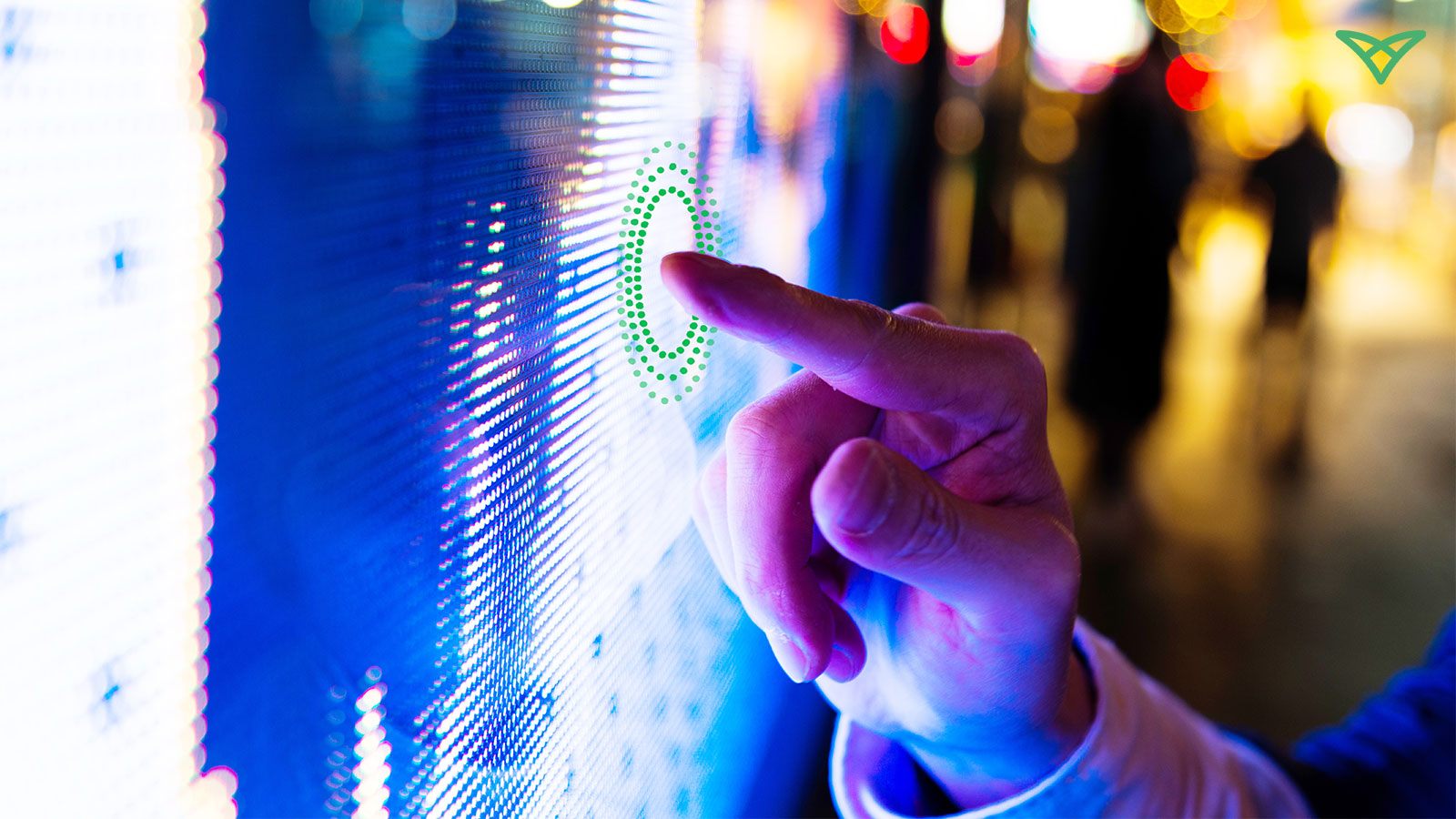
Touchless Interactive Kiosks: 7 User Insights
Posted; March 31, 2021
COVID-19 catalyzed demand for touchless kiosks. 80% of consumers now think public touchscreens are unhygienic. Touchless solutions also play well with other key trends in the market, such as 5G, IoT, and the rise of customer experience as a key differentiator.
But how do brands, retailers and kiosk integrators facilitate the adoption of touchless interactive kiosks? Saurabh Gupta, Director of Product, looks at seven things we’ve learned from user research and customer engagements.
- 66% of interactive kiosk users adopt gesture control
- Consumers prefer touchless interactive kiosks to mobile apps
- Users achieve close-to-touchscreen speeds
- You can engage new users in a matter of seconds
- Robust hand tracking really matters
- 2.25x increase in unaided ad recall
- 23% increase in interaction time when haptics added

1. 66% of interactive kiosk users adopt gesture control in preference to a touchscreen
In 2020, a multi-week pilot in a high-traffic environment was conducted using Ultraleap’s gesture control solution. Over 5000 consumers interacted with a touchless-enabled interactive kiosk.
Users could choose whether to interact using gesture control or a touchscreen. By the end of the pilot, 66% adopted gesture control for at least part of their interaction. This is despite the fact most users had never come across the technology before.

2. Consumers prefer touchless interactive kiosks to mobile apps
We asked over 500 US and UK consumers how they would prefer to order and pay for a meal in a food court. Averaging the data across first and second preferences, a touchless interactive kiosk was consumers’ number one choice.
3. Users achieve close-to-touchscreen speeds – if interactions are well designed
Ultraleap’s intuitive, flexible Air Push interaction style is engineered by keeping users in mind. It mirrors how users currently operate touchscreens, increasing familiarity and accelerating user education.
In transactional environments such as restaurants or self-serve checkouts, speed of task execution is essential. With Air Push, users can select any button or on-screen element by simply pushing forwards in mid-air.
Both the multi-week public pilot and usability testing confirmed it is possible for users to achieve close-to-touchscreen speeds. One of our testers described it as, “just like using a touchscreen but in mid-air”.
4. You can engage and train new users in a matter of seconds
How to engage new users is top of our customers’ list of priorities when it comes to integrating gesture control. How do you communicate to people that an interactive kiosk is touchless, and quickly teach them how to use it?
We’ve been researching this for over two years through multiple rounds of user testing and published, peer-reviewed research. The most recent round of usability tests indicated that first-time users can learn how to use a touchless interactive kiosk in a matter of seconds when using our best practice recommendations.

Find out more about touchless technology for interactive kiosks
5. Robust hand tracking really matters
It can be easy to assume that gesture control for interactive kiosk interfaces doesn’t require the same quality of hand tracking as, say, an immersive VR experience. In fact, customer engagements have shown us nothing could be further from the truth.
The time and efficiency pressures on self-serve kiosks mean they require gold-standard hand tracking. Ultraleap has the world’s most advanced hand tracking solution, based on 10 years and 5 generations of innovative software, over 150 patents, and a community of over 350,000 developers worldwide.

6. 2.25x increase in unaided ad recall in digital out-of-home
Interactive kiosks don’t only run functional interfaces. They also display interactive advertising content and experiential marketing campaigns.
We undertook a 2-month pilot in a top-tier, 14-screen multiplex cinema in downtown Los Angeles to investigate this use-case. Over 150,000 movie-goers were exposed to our touchless technology.
The pilot showed that touchless interactivity increases unaided ad recall 2.25x, doubles conversion rates, and results in an estimated sales uplift of approximately $15,000 per screen over a three-week run.

7. 23% increase in interaction time when haptics added
As the recent award-winning Skoda campaign showed, it’s perfectly possible to create impactful interactive advertising using hand tracking alone. However, adding our “virtual touch” haptics has a measurable additional impact.
The same LA movie theater study evaluated the use of hand tracking and haptics versus the use of hand tracking alone. When immersive tactile effects were added to hand tracking, users interacted with the content for up to 23% longer.
This validates a previous user study that found when haptics were added to hand tracking, people reported a 15% increase in feelings of excitement and were 73% more likely to purchase a product.
Find out more about touchless technology for interactive kiosks
We're turning interactive kiosks touchless
Explore our blogs, whitepapers, and case studies to find out more.





